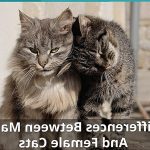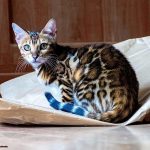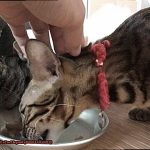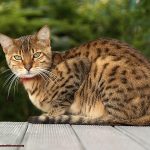We all know that cats are like little balls of magic, each with their own unique purrsonalities. But have you ever wondered what makes Bengal cats so darn special? These majestic creatures have been causing a stir in the feline world, and it’s time we unravel the mystery behind their enchanting ways.
Regular cats have been winning over our hearts for ages, but let me tell you, Bengal cats are on a whole other level. It’s like they’ve got a touch of wildness running through their veins – maybe they’re secret descendants of tigers or leopards. With their striking appearance and one-of-a-kind physicality, Bengals stand out from the crowd.
In this blog post, we’re embarking on an epic adventure to uncover the secrets that set Bengal cats apart from your average kitty companions. From their extravagant coats that would make even fashionistas jealous to their playful and social nature that will keep you entertained for hours, we’re diving deep into what makes these felines so irresistible to cat enthusiasts worldwide.
So grab your catnip tea and get cozy because we’re about to explore the wild side of Bengal cats. We’ll decode their enigmatic allure and discover why they’ve become the ultimate dream pets for many. Get ready to learn about their distinct physical characteristics, peculiar behaviors, and unique personalities that make them stand out in a sea of ordinary kitties.
Are you ready? Let’s embark on this thrilling journey together as we uncover what truly sets Bengal cats apart from your everyday furballs. Trust me; it’s going to be one heck of a ride.
What is the difference between a Bengal cat and a normal cat
If so, chances are you encountered a Bengal cat. With their striking coat pattern, unique size and build, and energetic personalities, Bengal cats stand out from the crowd of normal cats. In this article, we’ll delve into the fascinating differences between Bengal cats and their ordinary counterparts, shedding light on what makes them truly extraordinary feline companions.
Appearance:
Bengal cats boast a coat pattern that exudes an exotic air. Their stunning spots, rosettes, or marbled patterns mimic those of leopards or jaguars, setting them apart from the typical solid-colored coat of normal cats. Running your fingers through a Bengal cat’s fur reveals a silky softness that adds to their allure.
Size and Build:
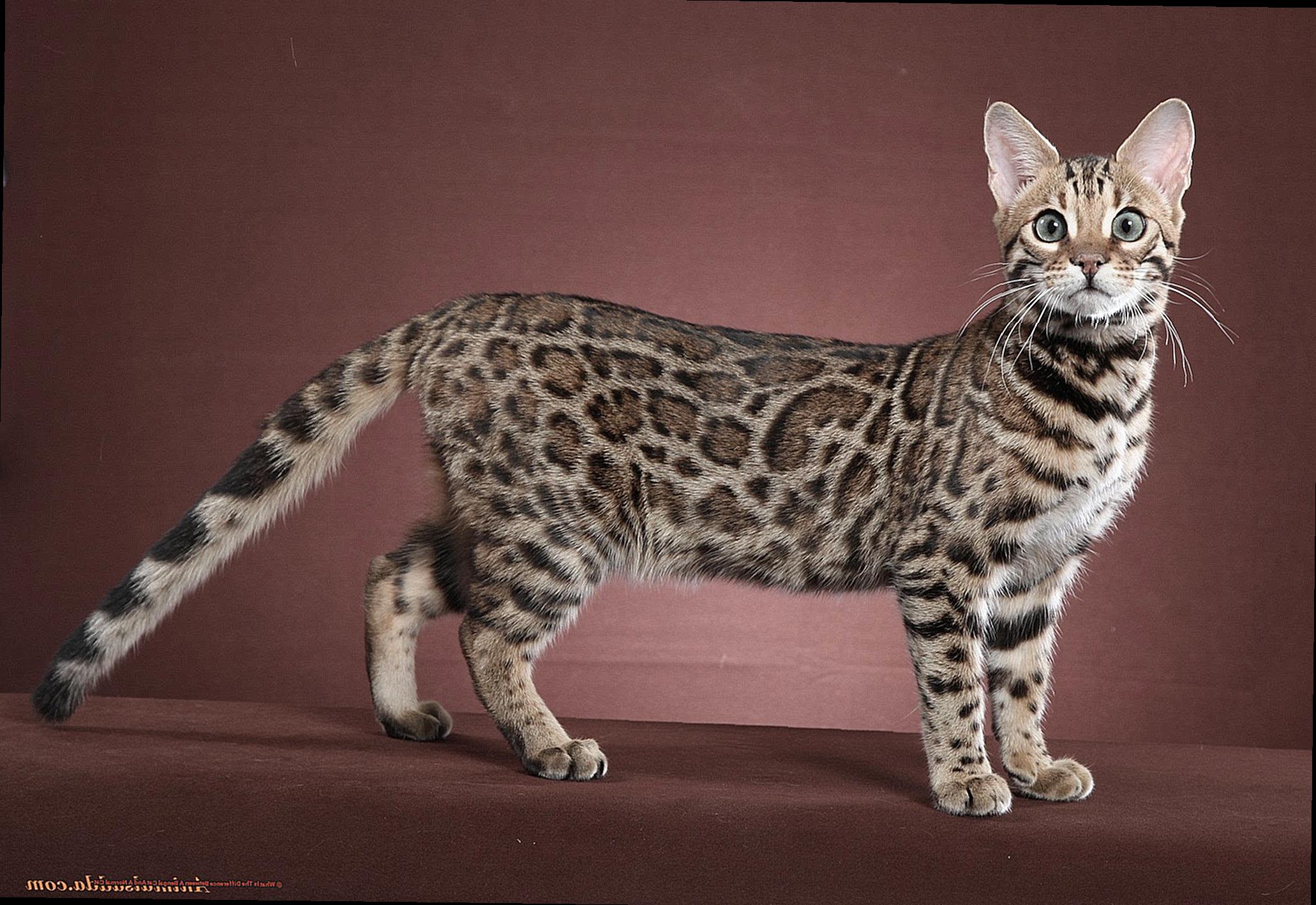
Prepare to be amazed by the size and muscularity of Bengal cats. These majestic creatures possess long bodies, strong legs, and a sturdy bone structure, making them larger and more robust than your average feline companion.
Temperament:
Bengal cats are known for their high energy levels and playful nature. They radiate curiosity and thrive on new adventures and stimulation. Normal cats can have varying temperaments, but Bengal cats are often in a league of their own when it comes to their active and inquisitive personalities.
Unique Traits:
Bengal cats exhibit certain quirks that set them apart from normal cats. One such trait is their affinity for water. Many Bengal cats find joy in playing or even swimming in water, likely stemming from their wild ancestry as Asian leopard cats.
Vocalization:
When it comes to expressing themselves, Bengal cats are not shy. They possess a wide range of vocalizations, including meowing, purring, chirping, and even growling when the need arises. Their vocal nature adds an extra layer of communication and interaction with their human companions.
Physical Characteristics: Coat Pattern, Textures, and Size
Bengal cats are a breed like no other, with their captivating coat patterns, luxurious fur textures, and impressive size. If you’re considering adding a Bengal cat to your family or just want to satisfy your curiosity about these stunning creatures, you’ve come to the right place.
In this blog post, we’ll dive deep into the physical characteristics that make Bengal cats so unique and captivating.
Coat Patterns: A Leopard’s Secret Admirer
Prepare to be mesmerized by the coat patterns of Bengal cats. Their fur is adorned with spots or marbled patterns that resemble those of wild leopards or jaguars. These striking patterns are the result of crossbreeding domestic cats with Asian leopard cats, giving Bengals their exotic appearance. Each Bengal cat has a one-of-a-kind coat pattern, making them truly individual works of art.
Fur Textures: Soft as Velvet
When you stroke a Bengal cat’s fur, prepare for a sensory delight. Their coat is soft and silky, like running your hands through a luxurious piece of velvet. The fur is dense and can vary in length, with some Bengals sporting shorter fur while others flaunt longer locks. No matter the length, the texture remains velvety smooth, making snuggle sessions with your Bengal cat an absolute pleasure.
Size: Mighty and Majestic
Bengal cats boast a larger-than-life presence. They have a muscular build and an athletic physique that demands attention. On average, male Bengals weigh between 10-15 pounds, while females tip the scales at around 8-12 pounds. Their long and lean bodies give them a graceful appearance, complemented by their strong muscles that enable them to leap and climb with ease.
The Wild Within: Domesticated Companions
While Bengal cats may have physical characteristics reminiscent of their wild ancestors, it’s essential to remember that they are domesticated pets. They possess all the traits of a normal cat when it comes to behavior and temperament. Their wild-looking exterior hides a gentle and affectionate nature, making them wonderful companions for cat lovers.
So, if you’re looking for a feline friend that will turn heads with its striking appearance, a Bengal cat might just be the perfect choice for you. Their unique coat patterns, soft fur textures, and larger size make them stand out from the crowd. But beyond their wild exterior lies a loving and loyal companion who will fill your life with joy and adventure.
For more information on Bengal cats or to find reputable breeders in your area, make sure to consult credible sources such as The International Bengal Cat Society (TIBCS) or The International Cat Association (TICA). These organizations can provide valuable insights into the breed and help you connect with responsible breeders who prioritize the health and well-being of their cats.
Facial Features: Exotic Look and Almond-Shaped Eyes
Bengal cats are known for their stunning appearance and exotic look. One of the key features that contribute to their unique appearance is their almond-shaped eyes. In this article, we will explore how these facial features, including their almond-shaped eyes and unique markings, make Bengal cats truly stand out.
Almond-Shaped Eyes: The windows to their wild soul
Unlike normal cats with round or oval-shaped eyes, Bengal cats have eyes that are slightly slanted and have a distinct almond shape. This eye shape adds to their wild appearance and gives them a mesmerizing gaze. Their almond-shaped eyes are often described as being large and expressive, enhancing their exotic look. These eyes are usually set slightly wider apart than the eyes of normal cats, further enhancing their captivating appearance.
Vibrant Eye Coloration: A sight to behold
Bengal cats are known for their vibrant eye colors. While normal cats can have a variety of eye colors, including green, blue, hazel, and brown, Bengal cats typically have captivating shades of green or gold. Some may even have eyes that appear to be a mix of both colors, adding to the allure of their facial features.
Mascara Lines: The finishing touch
In addition to their eye shape and color, Bengal cats often have other unique facial markings that further accentuate their exotic look. These markings, known as mascara lines or tear streaks, are dark lines that run from the inner corner of their eyes down towards their whiskers. Resembling the natural tear marks seen in some wild feline species, these markings contribute to the wild appearance of Bengal cats.
Individual Variations: Every Bengal cat is unique
It’s important to note that not all Bengal cats will have the same facial features. The appearance of a Bengal cat can vary depending on its individual genetics and lineage. Some may exhibit more pronounced almond-shaped eyes and vibrant eye colors, while others may have slightly rounder eyes and less intense colors. Regardless of the variations, Bengal cats always retain their exotic charm.
Personality Traits: High Energy Levels and Curiosity
These feline beauties are known for their high energy levels and insatiable curiosity, making them quite different from your average domestic cat. In this article, we’ll delve into the unique personality traits of Bengal cats and how they differ from regular cats.
High Energy Levels:
Bengal cats are like little balls of energy, always ready to play and explore. They have an abundance of energy that needs to be channeled in a positive way. This can be attributed to their wild ancestry as descendants of the Asian leopard cat. To keep them happy and healthy, Bengal cats require plenty of exercise and mental stimulation. Interactive toys, scratching posts, and playtime sessions will help burn off their excess energy.
Curiosity:
If there’s one thing Bengal cats excel at, it’s being curious. They have an innate desire to investigate their surroundings and are constantly on the lookout for new adventures. This curiosity can sometimes lead them into mischief, as they may be more prone to climbing on top of furniture or trying to escape outside.
Creating a stimulating environment with plenty of hiding spots, climbing structures, and puzzle toys can satisfy their curiosity while keeping them entertained.
Individual Differences:
While high energy levels and curiosity are common traits among Bengal cats, it’s important to remember that each cat is unique. Some Bengals may be more outgoing and adventurous, while others may be slightly more reserved. It’s essential to spend time getting to know your Bengal cat’s personality and tailoring their environment and interactions accordingly.
Lifestyle Considerations:
Before bringing a Bengal cat into your home, it’s vital to assess whether your lifestyle aligns with their needs. If you prefer a more laid-back and low-maintenance pet, a Bengal cat may not be the best fit. They require active involvement from their owners and thrive in households where they can receive plenty of attention and mental stimulation.
Health Considerations for Bengal Cats
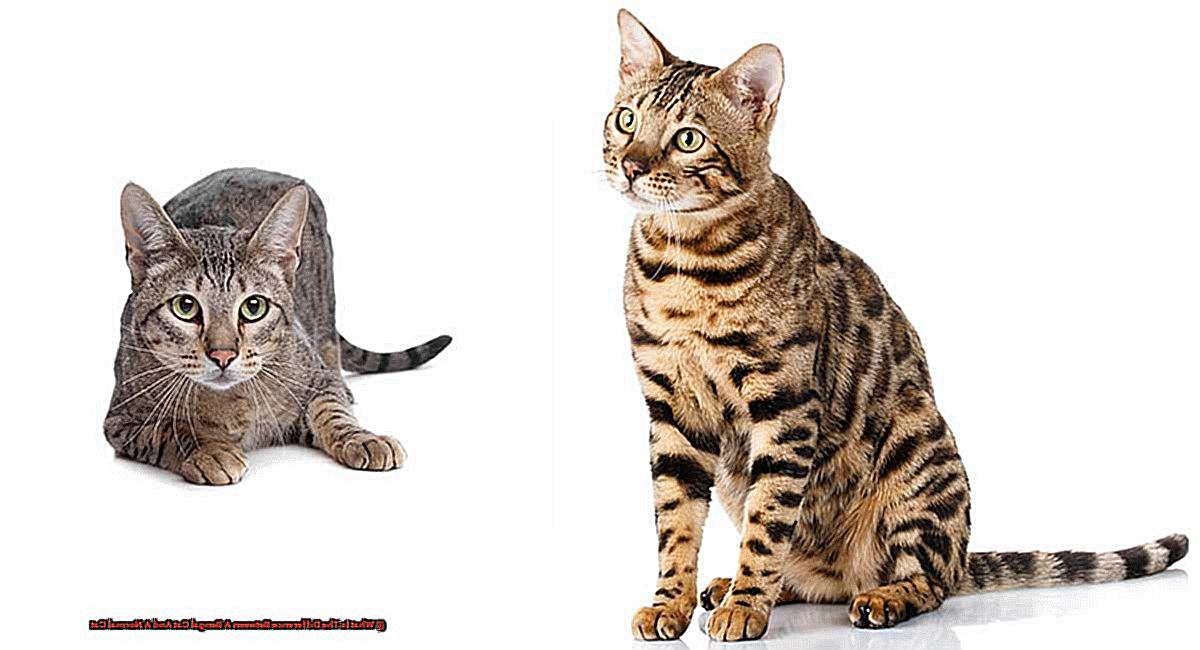
When it comes to health, Bengal cats are generally a sturdy breed. However, like any other cat, they can still be prone to certain health issues. As a responsible Bengal cat owner, it’s important to be aware of these considerations to ensure your furry friend stays healthy and happy. Here are some key health considerations for Bengal cat owners:
- Hypertrophic Cardiomyopathy (HCM): This is a heart condition that affects the thickness of the heart muscles. Regular check-ups with a veterinarian and screening for HCM through echocardiograms can help monitor and manage this condition.
- Anesthesia Sensitivity: Bengals have been found to have a higher sensitivity to certain anesthetic drugs. It’s crucial for veterinarians to be aware of this when administering anesthesia during surgical procedures. Always inform your vet about your cat’s breed before any procedure.
- Gastrointestinal Issues: Bengal cats may be more prone to gastrointestinal issues such as irritable bowel syndrome (IBS) or inflammatory bowel disease (IBD). These conditions can cause symptoms like vomiting, diarrhea, and weight loss. A proper diet and regular veterinary care can help manage these conditions effectively.
- Dental Problems: Bengal cats, like many other breeds, can develop dental issues such as periodontal disease or tooth decay. Regular dental care, including teeth brushing and professional cleanings, is crucial to maintain their oral health.
- Mental and Physical Stimulation: Bengals are known for being highly active and energetic cats. They require plenty of mental and physical stimulation to prevent behavioral issues that may arise from boredom or pent-up energy. Interactive toys, puzzle feeders, and playtime are essential for their well-being.
- Climbing and Jumping: Bengals love to climb and jump, so providing them with appropriate cat trees or vertical spaces within the home is essential. This not only satisfies their natural instincts but also reduces the risk of injuries from trying to climb on unsafe objects.
- Special Grooming Attention: Bengal cats have a unique coat pattern called “rosettes” or “spots.” Regular brushing can help prevent matting or tangling, especially in areas where the coat is longer or thicker. It’s important to establish a grooming routine early on to ensure your Bengal’s coat stays in top shape.
Grooming Requirements for Bengals
We all know that Bengals are a breed apart with their wild and exotic looks. But did you know that their grooming needs are also unique? Fear not, fellow Bengal enthusiasts, for I am here to share with you my expertise on keeping your majestic feline friend looking fabulous.
Minimal Maintenance, Maximum Style
Bengals have a short, dense coat that requires minimal grooming compared to some other cat breeds. Their coat is designed to be low-maintenance, just like their wild ancestors, the Asian leopard cat. So, you won’t need to spend hours brushing them every day – hooray.
Brushing Basics
While Bengals may not need constant brushing, regular brushing is still important to keep their coat healthy and tangle-free. It also helps to remove loose hair and minimize shedding during those pesky shedding seasons. So grab a brush and give your Bengal a good once-over every few days – they’ll love the attention.
Splish-Splash, They’re Taking a Bath
Now, here’s where Bengals really stand out from the crowd – they LOVE water. Some Bengals may even enjoy taking a dip or two. So why not indulge their water-loving nature by giving them a bath? Just make sure to introduce them to water gradually and use cat-friendly shampoos that won’t irritate their sensitive skin.
Nailed It.
Bengals have claws that would make Wolverine jealous, so regular nail trims are a must. Not only will this save your furniture from being shredded, but it also keeps your Bengal’s paws healthy and comfortable. Trim those nails regularly and your Bengal will be ready to rock those fancy scratching posts.
Say Cheese.
Don’t forget about dental care. Bengals, like all cats, are prone to dental issues. Brushing their teeth regularly with cat-safe toothpaste helps maintain good oral hygiene and prevents dental problems. So grab a toothbrush and get those pearly whites shining.
Ears to You.
Last but not least, give those adorable Bengal ears some TLC. Bengals can be more prone to ear infections due to their active and curious nature. Keep their ears clean and healthy by using a veterinarian-recommended ear cleaner. Trust me, your Bengal will thank you for it.
Feeding Habits of Bengal Cats
Bengal cats are not your ordinary feline companions. With their wild ancestry, these majestic creatures have unique feeding habits that set them apart from normal cats. As a cat owner, it’s important to understand and cater to their specific dietary needs to ensure they stay healthy and happy. So, let’s dive into the fascinating world of Bengal cat feeding habits.
The Protein Powerhouse:
Bengal cats are obligate carnivores, meaning they require a diet high in animal protein to thrive. Unlike your everyday tabby, Bengal cats have a faster metabolism and need more protein to maintain their boundless energy levels. So, make sure to feed them a diet that consists mainly of high-quality meat-based products such as raw or cooked meats, poultry, and fish. It’s like fueling up a sports car with premium gasoline.
Going Raw:
Some Bengal cat owners choose to feed their feline friends a raw food diet, also known as a biologically appropriate raw food (BARF) diet. This diet involves feeding the cat raw meats, bones, and organs—mimicking the diet of their wild ancestors. Proponents of this approach claim that it improves the overall health and vitality of Bengal cats. Just think of it as hitting the refresh button on their digestive system.
Wet vs Dry Food: The Thirst Quencher
While both wet and dry cat food can be suitable for Bengal cats, wet food is generally preferred due to its higher moisture content. Bengal cats tend to have a low thirst drive, so incorporating wet food into their diet helps ensure they stay hydrated. Plus, wet food provides a more natural texture and taste that appeals to their carnivorous instincts. It’s like adding a splash of excitement to their mealtime routine.
Limited Grains and Carbs: Keeping It Lean and Mean
Bengal cats have a limited ability to digest grains and carbohydrates compared to normal cats. Their shorter digestive tract is designed for breaking down proteins efficiently. Therefore, it’s recommended to choose cat foods that are grain-free or have limited grain content. Opt for foods with high-quality ingredients such as fruits, vegetables, and limited carbohydrates—keeping them lean and mean like a true predator.
The Power of Routine:
Establishing a regular feeding schedule is essential for Bengal cats. They thrive on routine and feel more secure when they know when and where their next meal is coming from. Dividing their daily food portion into several smaller meals throughout the day mimics their natural hunting and feeding patterns, preventing overeating and promoting a healthier weight. It’s like keeping their wild instincts satisfied.
Training Tips for Bengal Cats
Bengal cats are known for their high energy levels and intelligence, which can make them a bit more challenging to train compared to other breeds. However, with the right approach and consistency, you can successfully train your Bengal cat and establish good behaviors and habits.
Start training your Bengal cat at a young age to establish good behaviors and habits early on. This will also help them bond with you and understand boundaries. Positive reinforcement techniques such as treats, praise, and playtime work best when training Bengal cats. They respond well to rewards and will be motivated to repeat desired behaviors.
Keep training sessions short and frequent to prevent your Bengal cat from getting bored or losing interest. Five to ten minutes of training two or three times a day is ideal for them. Use interactive toys and puzzles to mentally stimulate your Bengal cat and keep them engaged during training.
Teach basic commands such as sit, stay, and come using consistent verbal cues and hand signals. Be patient and consistent with your training efforts, as Bengal cats can be stubborn at times. Use a clicker or a specific word as a marker to associate it with positive reinforcement. This will help your Bengal cat understand that they have done something correctly.
Provide your Bengal cat with plenty of physical exercise through playtime and interactive toys to help burn off excess energy and reduce behavioral issues. Bengal cats have high energy levels and need outlets for their physical activity.
If you encounter difficulties in training your Bengal cat, seek professional help or guidance from a cat behaviorist. They can provide tailored advice for your specific situation and help address any challenges you may be facing.
Exercise Needs of Bengal Cats
Bengal cats are a unique breed that requires special attention when it comes to exercise. These cats have an innate need for physical activity due to their high energy levels and natural hunting instincts. Here are some important factors to consider when providing exercise for your Bengal cat:
- Regular play sessions: Bengal cats enjoy interactive play sessions with their owners. Using toys that simulate hunting and chasing can keep them engaged and mentally stimulated. Make sure to set aside at least 20-30 minutes each day for playtime with your Bengal cat.
- Vertical climbing structures: Bengals love to climb and perch at high vantage points. Providing them with vertical climbing structures, such as cat trees or shelves, can satisfy their natural desire to explore and observe their surroundings.
- Outdoor access: Bengal cats appreciate outdoor spaces where they can roam and explore safely. However, it is crucial to ensure the outdoor area is secure and escape-proof. Consider creating a catio or using a harness and leash for supervised outdoor time.
- Puzzle toys and treat-dispensing toys: Engaging in activities that stimulate their natural hunting instincts, such as puzzle toys or treat-dispensing toys, can provide mental stimulation while also satisfying their need for physical exercise.
- Playtime with other pets: Bengal cats can benefit from engaging in interactive play with other pets or having a feline companion. This can help fulfill their exercise needs and also provide socialization opportunities.
Also Read: What Is The Best Otc Cat Food For Ibd
Conclusion
The Bengal cat is not your average feline. With its strikingly beautiful coat, muscular build, and wild appearance, it stands out from the crowd. Unlike a normal cat, the Bengal cat has a unique heritage that can be traced back to its wild ancestors. This lineage gives it some distinct characteristics that set it apart.
One notable difference between the Bengal cat and a normal cat is their coat pattern. While most cats have a solid color or simple markings, the Bengal cat boasts a stunning coat with intricate rosettes or marbled patterns. This exotic look is reminiscent of its wild leopard ancestors and adds to its allure.
Another distinguishing feature of the Bengal cat is its athletic physique. Unlike your typical domesticated cat, Bengals are known for their strong muscles and agile movements. They are natural-born climbers and love to explore their surroundings with grace and agility.
In terms of personality, Bengals also have some unique traits that differentiate them from normal cats. They are highly intelligent and curious creatures who thrive on mental stimulation and interactive play. Their active nature means they require plenty of exercise and mental enrichment to keep them happy.
While both Bengals and normal cats make great companions, it’s important to note that Bengals may require more attention and care due to their high energy levels and need for mental stimulation.
In conclusion, the Bengal cat stands out in many ways when compared to a normal cat. From its striking appearance to its athletic build and playful personality, it offers a one-of-a-kind experience for those looking for something extraordinary in their feline companion.
